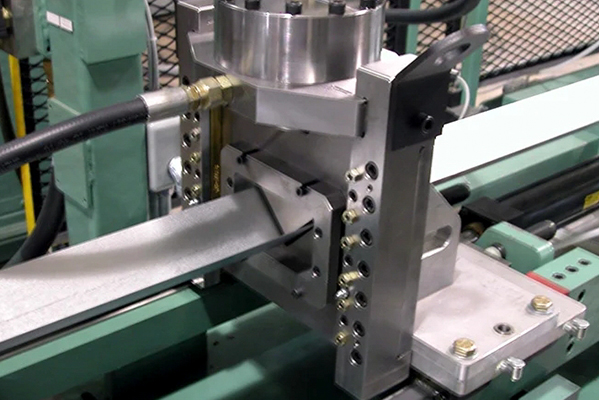Navigation Menu
Contact Us
- Email:
- info@wxavatar.com
- Address:
- Yurong Village, Yuqi Street, Huishan District, Wuxi, China.
Release Date:Apr 11, 2025 Visit:8 Source:Roll Forming Machine Factory
Metal framing is widely used in construction due to its durability, strength, and versatility. It consists of several key components that work together to create a stable structural framework. Below are the primary elements of metal framing systems.
1. Studs
Studs are vertical members that form the main support structure of walls. They are available in various sizes and thicknesses to accommodate different load requirements. Studs are typically spaced at regular intervals to provide stability and attachment points for wall coverings.

2. Tracks
Tracks, or top tracks, are horizontal components installed at the top of walls to secure the studs. They help distribute loads and maintain alignment. Bottom tracks serve a similar function at the base of the wall, providing a stable foundation for the framing system.
3. Joists
Joists are horizontal framing members used in floor and ceiling assemblies. They support the weight of the structure and any additional loads. Metal joists are often lightweight yet strong, making them suitable for various construction applications.
4. Runners
Runners, also known as channels, are used to connect and reinforce framing sections. They are installed horizontally or vertically to enhance structural integrity and provide additional support where needed.
5. Bracing and Bridging
Bracing components, such as straps and angles, help stabilize the metal framing by preventing lateral movement. Bridging, which consists of cross-bracing or solid blocking, reinforces joists and studs to reduce deflection and improve load distribution.
6. Furring Channels
Furring channels are lightweight metal strips used to create a level surface for attaching wall finishes, such as drywall or paneling. They are often installed perpendicular to studs or joists to provide proper spacing and support.
7. Fasteners and Connectors
Metal framing relies on specialized fasteners, including screws, clips, and anchors, to secure components together. Connectors, such as angle brackets and tie plates, ensure strong joints and proper alignment between framing members.
8. Headers and Sill Plates
Headers are horizontal beams installed above openings, such as doors and windows, to transfer loads to adjacent studs. Sill plates provide a base for window and door installations, ensuring a secure and level fit.

Conclusion
Metal framing systems consist of multiple components designed to work together for structural stability and efficiency. Each element, from studs and tracks to fasteners and bracing, plays a crucial role in ensuring a durable and reliable framework. By understanding these components, builders and designers can effectively utilize metal framing in various construction projects.